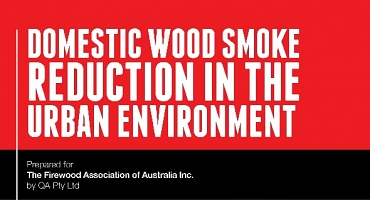
The FAA has recently published a report on the 3-year wood smoke reduction project that it carried in The Hills Shire in the north west of metropolitan Sydney. The project succeeded in achieving its aim, which was to provide councils with a practical, affordable way to deal with their domestic wood smoke concerns.
It is widely accepted that wood heaters and open fires do not create significant smoke pollution if they are operated correctly. The small percentage of houses that do not operate and maintain their wood fires correctly are responsible for most of the wood smoke complaints received by councils, and also the high levels of winter smoke pollution that can occur in some areas. A study of houses with functioning wood fires in Armidale in 2011 found that 85% of the smoke in the town was created by just 15% of these houses.
The situation with excessive domestic wood smoke pollution is somewhat similar to excessive smoke from motor vehicle exhausts. Only a few vehicles have smoky engines, the majority of modern vehicles do not emit excessive particle pollution. Obviously there is no need to ban all cars, trucks and buses in order to reduce vehicle smoke emissions; the smoky vehicles need to be identified and fixed. Similarly, the best way to ‘fix’ domestic wood smoke pollution issues is to identify the houses that are emitting excessive smoke and stop them from smoking.
Previous studies have found that a substantial reduction in the number of smoky wood fires can be achieved by educating the high smoke emitting households on correct wood heater use, followed by enforcement if necessary. There are two major difficulties that have prevented the widespread adoption of this strategy by councils:
- Identifying the high emitting households can be difficult, especially at night, and would require substantial resources in a large urban area.
- Successfully engaging with many of the highest smoke emitters, to motivate them to change their wood fire operating behaviour, can be challenging.
This latest FAA project was aimed at overcoming these two limitations and thereby enabling councils to effectively and affordably deal with domestic wood smoke pollution.
Firstly; the project demonstrated the capability of a novel car based smoke detection system called ‘SmokeTrak”. This system was developed specifically for the purpose of locating high wood smoke emitting households. In the second phase of the project, selected high emitting households were subjected to face-to-face education on wood heater operation and had their wood heaters inspected and cleaned. The third phase of the project assessed the effectiveness of the targeted education and enforcement interventions.
By the end of the project, out of the 20 households that had received the face-to-face education intervention only one household continued to emit excessive amounts of wood smoke and would require some form of enforcement to effect a change in behaviour. The proven success of this project clearly shows that the best way to deal with domestic wood smoke is through a program of targeted intervention delivered directly to the few households that are the main cause of wood smoke problems.
The FAA is now developing a “Local Government Guide for The Control of Domestic Wood Smoke”, based on the outcomes of this research project. This Guide will set out a simple step-by-step methodology that any council can use to resolve domestic wood smoke issues.
A copy of the FAA project report can be downloaded here. For a printed copy of the report please contact the FAA on 1300 131 481 or email info@firewood.asn.au.












